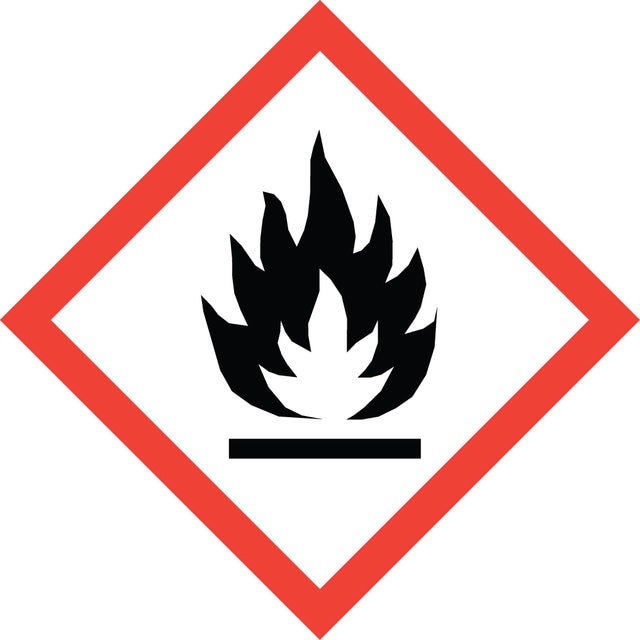Select a Size
About This Item
Product Name
2-Isopropoxy-4,4,5,5-tetramethyl-1,3,2-dioxaborolane, 97%
InChI
1S/C9H19BO3/c1-7(2)11-10-12-8(3,4)9(5,6)13-10/h7H,1-6H3
SMILES string
CC(C)OB1OC(C)(C)C(C)(C)O1
InChI key
MRWWWZLJWNIEEJ-UHFFFAOYSA-N
assay
97%
form
liquid
refractive index
n20/D 1.409 (lit.)
bp
73 °C/15 mmHg (lit.)
density
0.912 g/mL at 25 °C (lit.)
Quality Level
Related Categories
Application
It can also be used in the synthesis of following intermediates for generating conjugated copolymers:
- 9,9-Dioctyl-2,7-bis(4,4,5,5-tetramethyl1,3,2-dioxaborolane-2-yl)dibenzosilole.
- 3,9-Bis(4,4,5,5-tetramethyl-1,3,2-dioxaborolan-2-yl)-5,11-di(1-decylundecyl)indolo[3,2-b]carbazole.
- 2,7-Bis(4,4,5,5-tetramethyl-1,3,2-dioxaborolan-2-yl)-9,9-dioctylfluorene.
- 2,7-Bis(4′,4′,5′,5′-tetramethyl-1′,3′,2′-dioxaborolan-2′-yl)-N-9′′-heptadecanylcarbazole.
signalword
Warning
hcodes
Hazard Classifications
Eye Irrit. 2 - Flam. Liq. 3 - Skin Irrit. 2 - STOT SE 3
target_organs
Respiratory system
Storage Class
3 - Flammable liquids
wgk
WGK 3
flash_point_f
109.4 °F - closed cup
flash_point_c
43 °C - closed cup
ppe
Eyeshields, Faceshields, Gloves, type ABEK (EN14387) respirator filter
Regulatory Information
Choose from one of the most recent versions:
Already Own This Product?
Find documentation for the products that you have recently purchased in the Document Library.
Our team of scientists has experience in all areas of research including Life Science, Material Science, Chemical Synthesis, Chromatography, Analytical and many others.
Contact Technical Service
